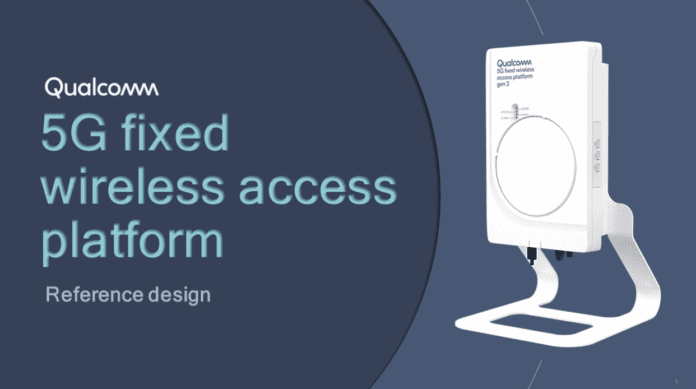Around one-third of the global population doesn’t have access to the internet and some that do don’t have reliable access. While cable and fiber could solve this, the economics of that aren’t tenable. 5G is viewed as another candidate for expanding home internet access, and Qualcomm is looking to accelerate the pace of change with its second generation 5G fixed wireless access platform.
Company CEO-elect Cristiano Amon, in a video presentation posted this week, discussed how the COVID-19 pandemic has “highlighted how important connectivity is,” giving the example of rapid mainstreaming of video telephony for remote work and education. “Looking ahead,” he said, “5G will be essential to the future of the digital and cloud-based economy.”
This tracks with Amon’s position as a champion of the World Economic Forum’s recently announced EDISON Alliance, which was established to “accelerate and foster unprecedented collaboration between the ICT community and other critical sectors of the economy” to enable “rapid digital development.”
As WEF Founder Klaus Schwab put it: “The time for gradual change toward digital access and adoption is over. we must highlight the critical nature of this challenge as foundational to so many others—and bring those who care about education, health, climate, equality and growth to also be champions in our mission to bring connectivity to all.”
To that end, Amon said, “The pandemic has not slowed us down. It has pushed us to keep working hard to bring the connectivity, compute and communication innovations that help keep communities, industry, and economies moving.”
Among those innovations, announced this week, is Qualcomm’s latest 5G FWA platform which uses the Snapdragon X65 Modem-RF System and QTM547 millimeter wave extended range antenna module and, for sub-6 GHz 5G, eight receive antennas, and Dynamic Antenna Steering.
Speaking in a new video, Gautam Sheoran, senior director of product management, said COVID prompted his four-person household to work and attend school from home and he had to upgrade his internet connection to improve the experience. While he said his story is one of inconvenience, “There are still lots of regions and people that are not connected to the internet at all.”
He continued: “Although we have technologies like cable and fiber that technically can be rolled out to everyone, it will take years before it can provide ubiquitous connectivity not to mention the cost and time consuming challenges that come with last mile deployment of these technologies. That’s why making 5G fixed wireless access a commercial reality is so important to Qualcomm.”
On the new platform, Sheoran said the flexibility of the technology, coupled with a reference design for OEMs to work from, “delivers a comprehensive modem-to-antenna platform for high performance 5G millimeter wave customer premise equipment designs. We are enabling our customers to rapidly develop a diverse set of product portfolio that is compatible to the requirements of every major region around the world.”
He added that the reference design should accelerate time-to-market of new 5G FWA customer premise equipment, take some costs out of the design process, reduce installation costs, and pave the way for self-installs.

